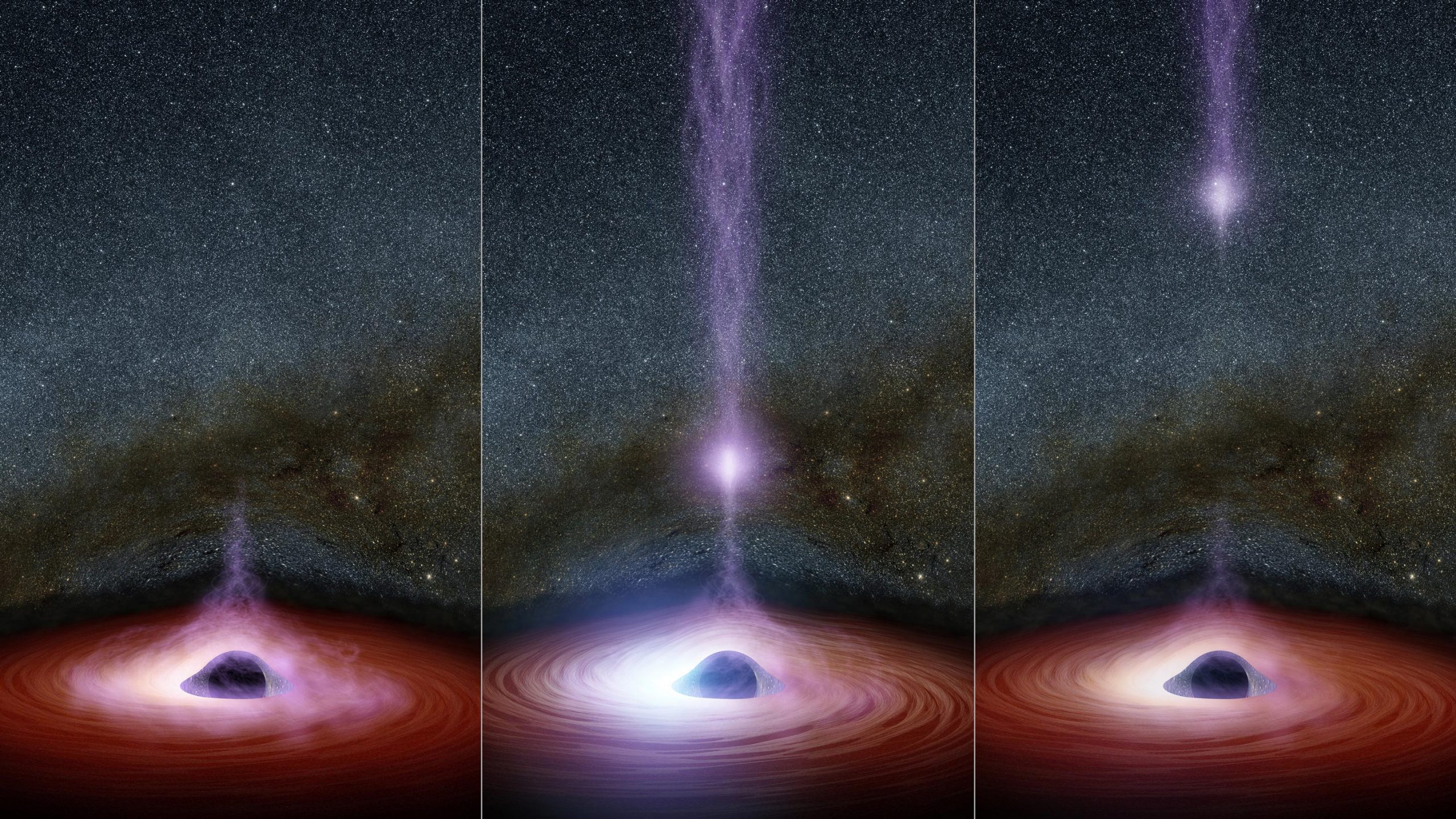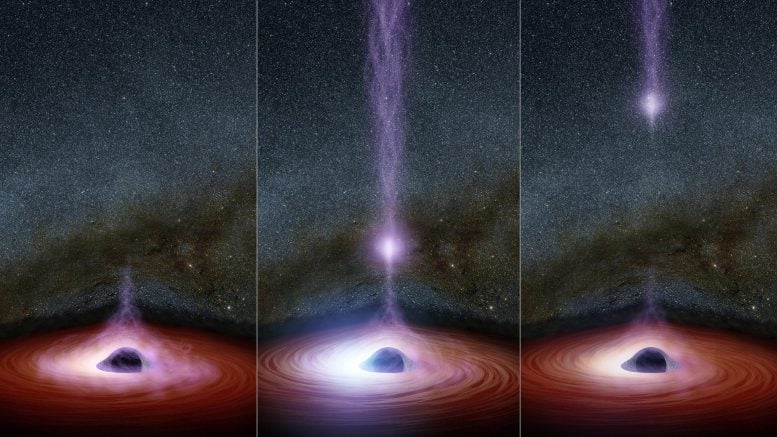

Astronomers have discovered that shifts in the corona around black holes lead to dramatic flares of X-rays, observable through advanced telescopes.
This phenomenon involves a process where the corona gathers inward, brightens, and then shoots away, significantly increasing X-ray emissions.
This diagram illustrates how a shifting feature known as a corona around a black hole can cause a flare of X-rays. Initially, the corona, depicted in purplish colors, gathers inward and intensifies in brightness before it propels away from the black hole. Although the reasons behind these shifts in the corona remain unclear, astronomers have established that such movements result in a noticeable increase in X-ray brightness, detectable by telescopes.
Under normal circumstances, even before the corona shifts, an effect called relativistic boosting is already influencing the X-ray light. This phenomenon occurs when the X-ray light emitted by the corona bounces off the black hole’s surrounding disk of material, which moves at nearly half the speed of light. The X-ray light is then amplified on the side of the disk that is moving toward us, as depicted on the left side of the illustration. Conversely, on the side where the disk moves away from us, the X-ray light appears dimmer.
Another form of relativistic boosting happens when the corona shoots away from the black hole, and later collapses. Its X-ray light is also brightened, as the corona travels toward us leading to X-ray flares.
In 2014, NASA’s Nuclear Spectroscopic Telescope Array, or NuSTAR, and Swift space telescopes witnessed an X-flare from the supermassive black hole in a distant galaxy called Markarian 335. The observations allowed astronomers to link a shifting corona to an X-ray flare for the first time.